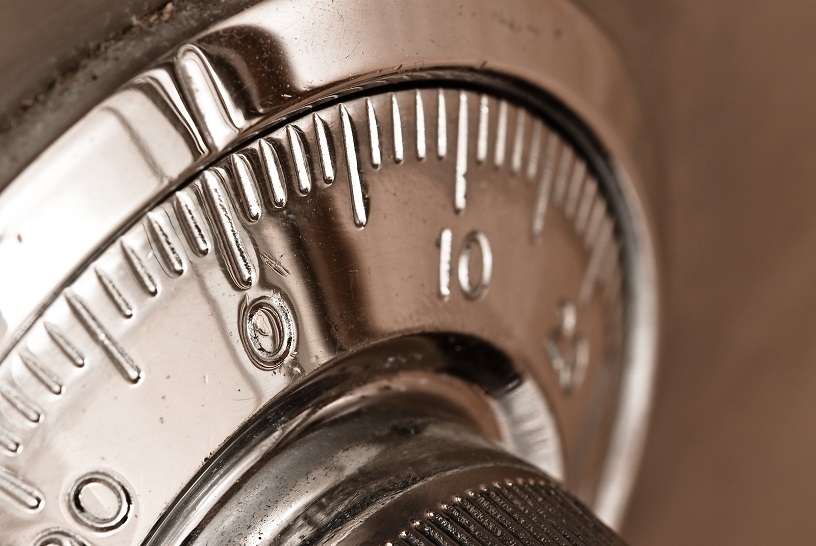
Best and Worst Safe Codes

Older combination safes have a dial that can be turned left or right. Modern combination safes might feature a numerical keypad. Either way, the principle is the same: the owner of the safe can set the combination code to be a particular sequence of digits. Entering the correct string of numbers grants a person access to the safe. However, certain sequences are more secure than others. Let’s take a look at the best and worst practices when it comes to choosing a code for your safe.
Bad Practice
The least secure code is never to bother setting one at all. Most models will come with a factory set code such as R4 L3 R2 L for a dial safe (the R and L signifying direction and the number signifying the number of turns of the dial) or 000000 for a keypad. Never bothering to reset the code to a sequence of your choosing leaves the safe vulnerable to being cracked by anyone with the wits to look it up.
Memorable Sequences
A sequence needs to be memorable. But you shouldn’t choose some accessible piece of knowledge about yourself such as your birthday or wedding anniversary. A random sequence of digits is more secure, but if its so unmemorable that you have to write it down somewhere – then your security is compromised by the existence of that piece of paper!
Good Practice
Always change the code as soon as you take possession of a safe. If you have to write down the code somewhere than at least use a cipher. This could mean changing the digits by some number (adding one in the simplest case) rather than writing down the actual code for an intruder to stumble across!
Have you forgotten the code to your safe and need help accessing it? If so, we can help. Call us on 01603 812613 and ask about our safecracking services. If you require a safe to be moved, we have a dedicated safe removals van.
For regular security tips, follow us on Facebook.